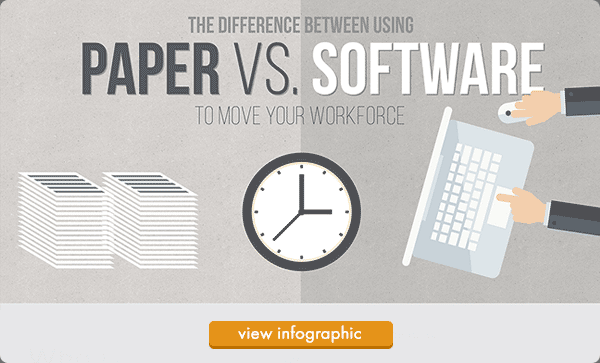5 Ways to Get Better Results from Your Move Process


According to a recent survey conducted by the International Facilities Management Association, “companies move, remodel, or relocate 25-30% of their facilities’ total square footage each year.” Through detailed facility research and data analysis, many organizations are realizing increased productivity and employee retention through such moves, maximizing on space, and offering a more favorable workplace environment for their employees.
If the facility you manage is seeking to improve their position in the marketplace through a move, regardless of the magnitude, the business only stands to benefit if it is a positive experience. Results should include  operational improvements, increased productivity, and a more efficient space; all, hopefully, leading to a positive impact on the bottom line. With so much at stake, it is crucial no stone is left unturned and every detail is ironed out BEFORE the move takes place. Fortunately, through proper preparation your facilities team can ensure downtime is limited and the relocation process is a success.
operational improvements, increased productivity, and a more efficient space; all, hopefully, leading to a positive impact on the bottom line. With so much at stake, it is crucial no stone is left unturned and every detail is ironed out BEFORE the move takes place. Fortunately, through proper preparation your facilities team can ensure downtime is limited and the relocation process is a success.
1) Align Move Specifications with Business Objectives and Develop A Well-documented Plan
It is unreasonable to expect a successful outcome if your team is not thoroughly educated regarding the main drivers behind the move itself. What are the business’ objectives, both long and short-term, and what is the company trying to accomplish with this move? If you simply require additional space, is it more economical to add square footage through an adjoining space or relocate the entire company? Is your current location’s space being utilized properly and, if not, is a redesign a more economical solution?
At a staggering 52%, insufficient move planning was cited as the leading issue, according to a recent survey, with design flaws (43%); telephone and computer failures (39%); selecting appropriate vendors and movers (37%); staff cooperation and maintaining moral (29%); purging old files (21%); overlooking important tasks (19%); keeping within the budget and schedule (11%); and matching files and equipment to the proper offices (10%) falling minimally behind. Thus, a well thought out plan from the start is critical to a successful move. If you are unsure where to start, Integra’s A Timeline For Moving Your Company is a great resource. By establishing criteria, building checklists, and communicating with all employees, you ensure everyone is on the same page regarding upcoming changes and their role within the move.
Here are a few important items to consider when developing your plan-of-action:
- Start the planning process early. Depending upon the size of your move, it is recommended to allot anywhere from 6 to 18 months to complete a proper moving plan.
- If you have not already done so, consider investing in Space Management and Move Management software. It is crucial that you gain a clear understanding as to how your current space is being used, what is working, and what is not. This knowledge will aid you in identifying what your needs are moving forward and locating the proper future space.
- Focus on the details. Never has the statement “the truth is in the details” proven more relevant than in a business move. Create task lists down to the last detail to ensure nothing is missed. Maintain organization through the entire process, as once it is lost, many companies find it difficult to ever catch up again.
- Create checklists and use them. Even the simplest and the most obvious of tasks can be overlooked during a project of this magnitude. Develop checklists, broken down step-by-step, department-by-department, leaving no question unanswered.
- Consider hiring a professional consultant. Many organizations try to save money by planning the move process themselves when in reality, hiring an outside consultant stands to save both time and money.
- Order printing materials ahead of time. Once your company has established its new roots, it is important your employees have the ability to get back to work immediately. Plan to update the website and order business cards and letterhead before the move.
- Plan the move during the company’s slowest time. Reduce downtime by identifying your organization’s slowest time of the week and plan accordingly. For many, one evening is not enough time for IT to get all systems back up and running, so consider this when developing a plan of action.
2) Pre-sell the Move by Involving Everyone from the Start
Whether yours is a relocation project, office redesign, or simply a departmental move, the move process is disruptive for everyone involved. For a smooth transition, involve all parties from the consideration stage all the way to the end. By including your workforce from the beginning, you improve office morale and encourage collaboration, hopefully gaining the commitment and support needed to see the company’s vision through to fruition. Additionally, your facilities team stands to gain valuable insight into current issues and identify solutions for the new space. Increased efficiency and productivity is, undoubtedly, one of the company’s primary goals- who better to consult than those on the front line day in and day out?
3) Set a Realistic Budget and Plan for Increased Efficiency in the New Office
Speak with any relocation consultant and they will tell you hundreds of horror stories regarding companies who planned a move without prudent attention to the estimated costs. Be realistic in setting a budget, consulting with everyone from move specialists to the IT department and CEO. Analyze data collected from your Facilities Management Software and consult with a move specialist if possible. This is one area you do not want to cut corners – it is better to have room left in your budget at the end of the move than require additional funding because of missed details.
Planning a move is the perfect time to evaluate the efficiency of organizational processes and hopefully, reduce operational expenses. A little investment in more up-to-date technology, mobility, security, and “green” initiatives stand to add overall value to the company’s overall bottom line. If the budget allows, discuss investing in tools that will set the business up for future growth and changes.
4) Assess Technology Solutions and Consult with IT Early
Technology is growing by leaps and bounds, showing no signs of slowing down. If your office hasn’t kept up with the latest in technological advances, this is your opportunity to make changes – investing now to better prepare for the future.
Here are a few items to consider when analyzing the company’s current technological support:
- What software solutions does your organization currently utilize and are they meeting your current needs?
- What are the plans for short and long-term growth and where does the current technology fit in?
- Does your data backup solution support your Business Continuity plans?
- What services can you eliminate or consolidate?
- Are your employees’ current mobility needs being met? Do you anticipate increased needs in the future?
- Are you currently utilizing the cloud and if not, are there any future migration plans?
Once you have had an opportunity to assess the data, you will gain a better understanding as to what changes/upgrades are necessary. Create a list of priorities and develop a budget accordingly. It is crucial you involve IT throughout this process, so as to ensure you have considered every aspect of all new investments. IT services should be able to help you identify any physical space and cabling requirements, as well as estimated downtime during this transition.
5) Prepare for the Worst, Expect the Best
As the facilities manager, you are all too familiar with project roadblocks and challenges. As carefully as you plan, it is always safe to expect the unexpected. While it is impossible to predict every scenario, emergency preparedness is key. During the planning stages, consider every aspect of the relocation project and develop a plan of action accordingly. While you cannot prevent setbacks, you do have control over how you respond.
A few of the most common mistakes companies make when planning a move are:
- rushing through decisions
- focusing too narrowly on a few basic costs
- failing to use available economic development services
- neglecting quality-of-life factors
- overlooking important environmental or regulatory concerns
- discounting plans for future expansion
These common mistakes can be avoided by taking the time to map out every aspect of the move, involving the right people from the beginning, and factoring in future growth with every decision.
Your company’s relocation/redesign project is a major undertaking. As with every project, there will likely be setbacks along the way. The key is to keep your “eye on the prize” and never lose sight of overall organizational goals. By identifying primary objectives, your facilities team will gain valuable insight into what changes must be made, developing a roadmap accordingly. The primary components to keeping your company productive during a move are communication, a detailed plan of action, involving the workforce, and increasing efficiency through upgrading technology and improving processes. Those who are mindful of these elements will achieve a move that will positively impact the company’s bottom line through an inspiring and productive space for employees and more streamlined and effective processes, while creating a space that will grow with the company for years to come.

